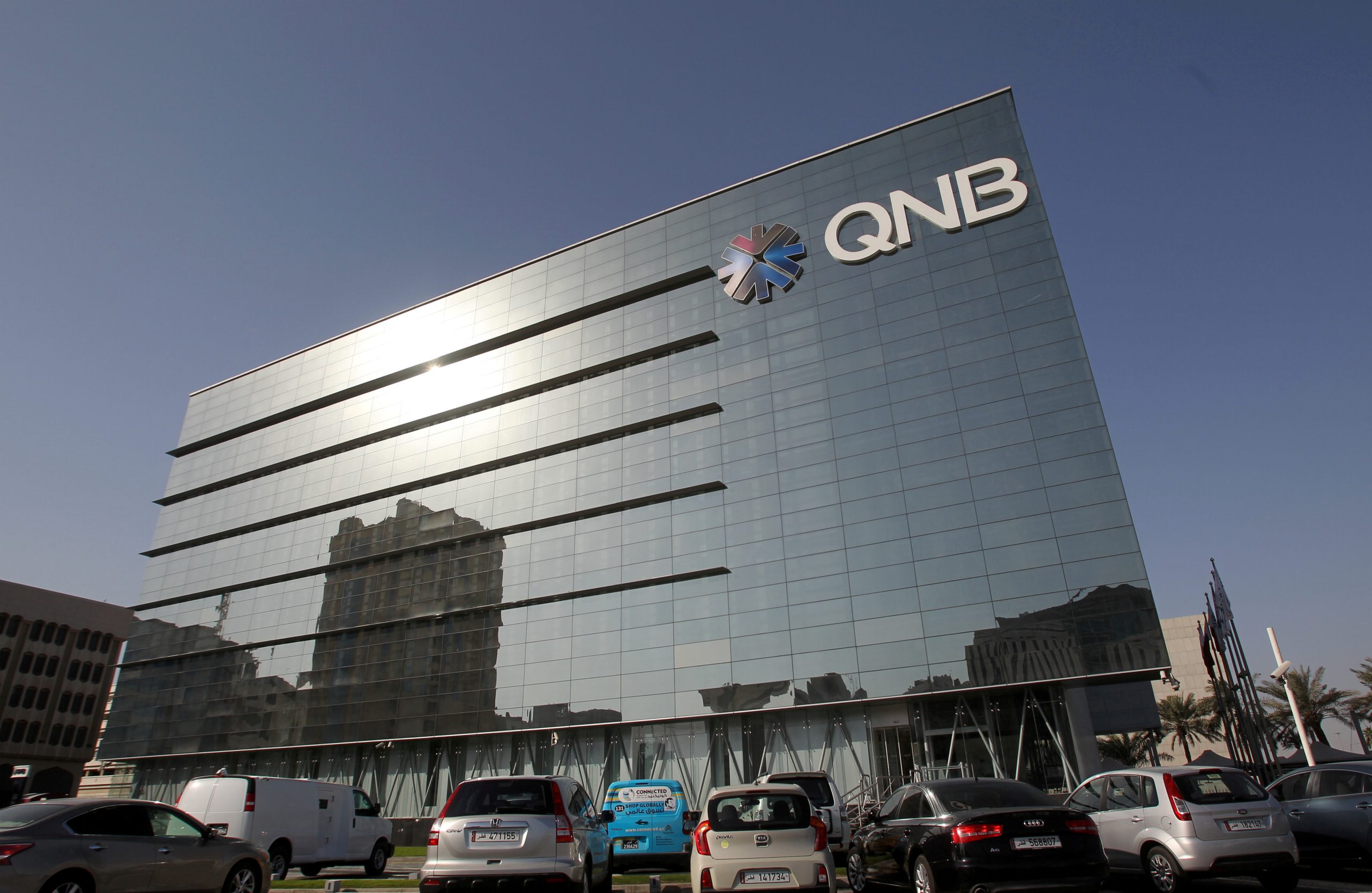QNB: Divergent Recoveries Are Set to Continue, Favoring Advanced Economies
كيو آن بي: توقعات بتفاوت مستويات التعافي الاقتصادي مع تفوق أداء الاقتصادات المتقدمة
QNA
Doha: Qatar National Bank (QNB) said that the economic outlook of the International Monetary Fund (IMF) for October remained largely similar to its previous expectations, highlighting significant and profound changes in the economy of various countries and regions.
In its weekly commentary, QNB said, “The International Monetary Fund (IMF) has recently published its October 2021 World Economic Outlook (WEO), “Recovery during a pandemic”, highlighting key elements of the ongoing global economic rebound. According to the IMF, growth is expected to remain strong globally, increasing by 5.9 percent in 2021 and decelerating modestly to expand by 4.9 percent in 2022.”
“While the IMF’s overall outlook remained broadly similar to their previous forecasts, there were significant changes below the surface, across different countries and regions. In fact, the main takeaway from the IMF is that recoveries are expected to diverge significantly going forward. Emerging markets (EM) are expected to gain less traction than advanced economies (AE) on the recovery process. AE’s are going to reach their pre-pandemic growth trend in 2022, while EM countries are expected to lag behind their previous trends for years.”
“This divergence is also expressed in the weakening of EM relative economic outperformance. EM growth tended to be 289 basis points (bps) stronger than AE growth over the past decade, reinforcing the idea that EM countries were “catching up” to the higher levels of income and economic sophistication of the AE. However, this pattern changed significantly since the post-pandemic recovery and today is more than 3 percent below its pre-pandemice performance. In our view, three factors explain this change in relative performance.”
QNB explained, “First, the current change in EM-AE relative economic performance from historical norms is associated with different monetary and fiscal policy space. EM countries, and particularly middle- and lower-income EM, have less policy space to stimulate their economies during a downturn. With weaker central banks and fiscal institutions, and with a smaller capital base to tap into, most EM do not have the conditions to support their households and corporates the same way that more advanced countries do. As a result, while economic authorities protected the balance sheet of the private sector from the pandemic crisis in AE, the same did not apply for most middle- and lower-income EM. Exceptions to this lack of policy space include higher income EM or other EM economies that benefit from a strong net foreign asset positions and low levels of indebtedness. Thus, in EM with limited policy space, both consumption and investment will be relatively slower to recover.”
“Second, different vaccination rates between EM and AE are also playing a part on the pace of the recovery. Vaccinations programs have progressed remarkably in AE since the beginning of the year, while vaccinate rollout is much slower in EM. Nearly 60 percent of the population have been fully vaccinated in AE, compared with only 36 percent in EM and 4 percent in low-income EM. As long as this vaccination rate differences persist, EM will be more vulnerable to potential Covid-19 resurgences, which could further delay their recoveries.”
‘Third, the slowdown in China is a particularly strong headwind to EM. China’s economy comprises 43.3 percent of total EM GDP. Moreover, Chinese growth has a high multiplying effect, often spilling over globally, particularly to commodity exporters and Asian EM. Thus, the current slowdown of growth in China, from over 18 percent year-on-year (y/y) at its peak to around 4.9 percent in the last quarter, is materially negative for the growth outlook of EM.”
“All in all, while the global economy is expected to continue its recovery from the pandemic, divergences are significant and should continue over the next couple of years. Middle- and lower-income EM are expected to lag behind their pre-pandemic growth trends and “catch up” to AE at a slower pace than previously anticipated,” the bank concluded.
قنا
الدوحة: اعتبر بنك قطر الوطني /كيو آن بي QNB/ أن توقعات التقرير الأخير لصندوق النقد الدولي لشهر أكتوبر الماضي ظلت إلى حد كبير مماثلة لتوقعاته السابقة، حيث كانت هناك تغيرات كبيرة وعميقة على اقتصاد مختلف البلدان والمناطق.
وأوضح البنك، في أحدث تقاريره، أنه من المتوقع، عقب نشر صندوق النقد الدولي لتقرير شهر أكتوبر 2021 بشأن آفاق الاقتصاد العالمي بعنوان “التعافي خلال الجائحة” وسلط فيه الضوء على العناصر الرئيسية للتعافي الاقتصادي العالمي المستمر، أن يظل النمو الاقتصادي قويا على مستوى العالم، حيث سيرتفع بنسبة 5.9% في عام 2021 ثم سيتباطأ بشكل طفيف إلى 4.9% في عام 2022.
ورأى البنك أن النتيجة الرئيسية التي توصل إليها الصندوق هي أن مستويات التعافي من المتوقع أن تشهد تفاوتا كبيرا في المستقبل، مثلما من المتوقع أن تتقدم الأسواق الناشئة بشكل أقل من الاقتصادات المتقدمة في عملية التعافي وستصل الاقتصادات المتقدمة إلى مستويات النمو التي كانت سائدة قبل الجائحة في عام 2022، بينما يتوقع أن تظل بلدان الأسواق الناشئة دون مستويات النمو السابقة لعدة سنوات.
كما أشار التقرير إلى أن هذا التفاوت يتضح أيضا في تراجع التفوق الاقتصادي في أداء الأسواق الناشئة، فقد كان نمو الأسواق الناشئة عادة أعلى بواقع 289 نقطة أساس من نمو الاقتصادات المتقدمة خلال العقد الماضي، مما يعزز فكرة أن بلدان الأسواق الناشئة كانت في طور “اللحاق” بالمستويات الأعلى للدخل والتطور الاقتصادي السائدة في الاقتصادات المتقدمة، ومع ذلك تغير هذا النمط بشكل كبير منذ عملية التعافي بعد جائحة كورونا وأصبح اليوم أقل بنسبة 3% من مستويات ما قبل تفشي /كوفيد-19/.
وعزا التقرير الأسبوعي الصادر عن بنك /كيو آن بي QNB/ هذا التغير في الأداء النسبي إلى ثلاثة عوامل، مبينا أن التغير الحالي في الأداء الاقتصادي النسبي للأسواق الناشئة والاقتصادات المتقدمة من المعدلات التاريخية يرتبط باختلاف الحيز المتاح في جانب السياسات النقدية والمالية، فبلدان الأسواق الناشئة، لا سيما الأسواق الناشئة ذات الدخل المتوسط والمنخفض، تمتلك حيزا أقل لتحفيز اقتصاداتها أثناء فترات التراجع الاقتصادي.
واعتبر أنه بالنظر لضعف البنوك المركزية والمؤسسات المالية، وصغر قاعدة رأس المال، فإن معظم الأسواق الناشئة ليس لديها المتطلبات اللازمة لدعم الأسر والشركات كما تفعل البلدان الأكثر تقدما، ونتيجة لذلك قامت السلطات الاقتصادية بحماية الميزانية العمومية للقطاع الخاص من الأزمة الوبائية في الاقتصادات المتقدمة، بينما لم ينطبق الشيء نفسه على معظم الأسواق الناشئة ذات الدخل المتوسط والمنخفض.
وتشمل الاستثناءات من هذا النقص في الحيز المتاح للتدخل عبر السياسات النقدية والمالية الأسواق الناشئة ذات الدخل المرتفع أو بعض اقتصادات الأسواق الناشئة الأخرى التي تستفيد من قوة صافي مراكز الأصول الأجنبية وانخفاض مستويات المديونية، وبالتالي سيكون التعافي أبطأ نسبيا في كل من قطاعي الاستهلاك والاستثمار في الأسواق الناشئة ذات الحيز المحدود للتدخل الحكومي.
أما العامل الثاني للتغير في الأداء النسبي فإنه يمثل في تأثير تفاوت معدلات التطعيم بين الأسواق الناشئة والاقتصادات المتقدمة أيضا في وتيرة التعافي، حيث أحرزت برامج التطعيم ضد كورونا تقدما ملحوظا في الاقتصادات المتقدمة منذ بداية العام، في حين كان طرح حملات التطعيم أبطأ بكثير في الأسواق الناشئة، وتم تطعيم ما يقرب من 60% من السكان بشكل كامل في الاقتصادات المتقدمة مقارنة بنسبة 36% فقط في الأسواق الناشئة و4% في الأسواق الناشئة ذات الدخل المنخفض، وإذا استمر هذا التفاوت في معدلات التطعيم ستظل الأسواق الناشئة أكثر عرضة لاحتمال عودة ظهور حالات الإصابة بـ/كوفيد-19/، مما قد يؤدي إلى تأخير التعافي الاقتصادي في هذه البلدان.
ويتمثل العامل الثالث في هذا التغير فيما يمثله التباطؤ في الصين من عائق كبير للأسواق الناشئة تحديدا، إذ يشكل الاقتصاد الصيني 43.3% من إجمالي الناتج المحلي للأسواق الناشئة، علاوة على ذلك فإن نمو الصين له تأثير مضاعف كبير وغالبا ما يمتد على مستوى العالم لا سيما إلى مصدري السلع والأسواق الناشئة في آسيا وبالتالي فإن التباطؤ الحالي في نمو الاقتصاد الصيني، الذي تراجع من أعلى معدلاته التي تجاوزت 18% على أساس سنوي إلى حوالي 4.9% في الربع الأخير، يعتبر أمرا سلبيا للغاية لتوقعات النمو في الأسواق الناشئة.
وتوقع بنك قطر الوطني في تقريره أن يواصل الاقتصاد العالمي تعافيه من الجائحة، إلا أن الاختلافات في حجم هذا التعافي كبيرة ومن المرجح أن تستمر خلال العامين المقبلين.
كما أنه من المتوقع أن تتخلف الأسواق الناشئة ذات الدخل المتوسط والمنخفض عن اتجاهات النمو التي كانت سائدة قبل جائحة كورونا، وأن “تلحق” بركب الاقتصادات المتقدمة بوتيرة أبطأ مما كان يتوقع في السابق.




